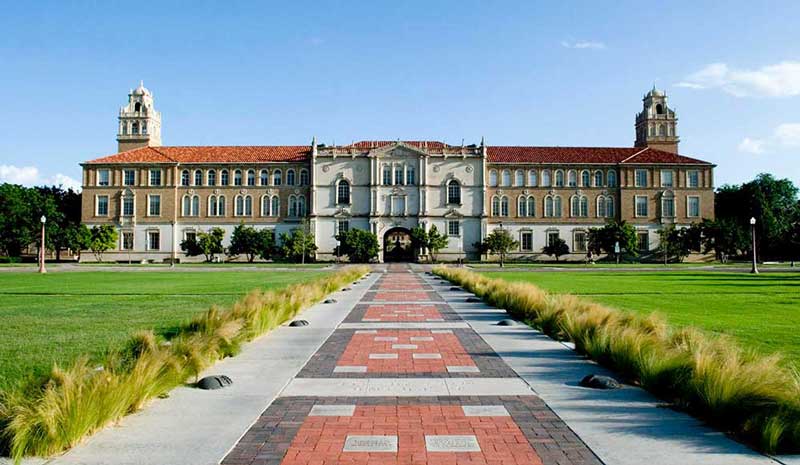Contents
SUMMARY
Texas Tech University is a public research university in Lubbock, Texas, United States. Established by the Texas Legislature in 1923 and opening in 1925, it is the flagship institution of the Texas Tech University System. With a broad portfolio of more than 150 degree programmes across colleges, the university is classed as an “R1: Doctoral Universities – Very high research activity” institution. As of Fall 2024, Texas Tech enrolled over 40,000 students and anchors higher education, research and community impact in the western two-thirds of Texas.
HISTORY
Texas Tech’s origins trace to legislative efforts in the early twentieth century to bring a major institution of higher education to West Texas. In 1917, a bill was passed to establish a branch of Texas A&M in Abilene, but it was repealed two years later amid controversy over site selection. In 1921, new legislation was proposed, but Governor Pat Neff vetoed it, citing financial constraints for West Texas; in response, some West Texans even advocated for secession from the state.
In February 1923, Senate Bill No. 103 was passed to establish a new university — not merely a branch campus — to serve the region. Governor Neff signed it on 10 February 1923. A locating committee was formed, and in August 1923, Lubbock was chosen over rival towns such as Floydada and Big Spring, after a groundswell of civic support from the local populace. Construction began on 1 November 1924, and ten days later the cornerstone of the Administration Building was laid before a crowd of 20,000. The college officially opened for classes on 1 October 1925 with 914 students (both men and women) across four initial schools: Agriculture, Engineering, Home Economics, and Liberal Arts.

Still known then as Texas Technological College, the institution gradually expanded. Military training was offered early (as early as 1925), with formal ROTC introduced in 1936. Student numbers grew (by 1939, enrollment reached nearly 3,890) though the Second World War caused temporary declines; the school contributed through military training detachments. After the war the college’s enrolment rebounded sharply. Through the 1950s and 1960s, Texas Technological College broadened its academic scope. Discussions began about the name: some faculty proposed “Texas State University” to reflect the broader mission, but alumni and stakeholders insisted on preserving the “Double T” symbol. In June 1969, the state legislature approved the name change; from 1 September 1969 onward, the institution became Texas Tech University.
During the same era, the institution was racially integrated: in 1961, Lucille S. Graves became the first African-American student admitted. The 1960s and 1970s saw massive capital investment in academic buildings, libraries, and expansion of science, engineering, art, and architecture facilities. In 1996, the Texas Tech University System was formally established; Texas Tech University became a constituent member, along with the Texas Tech University Health Sciences Center. Over subsequent decades, the university has continued significant growth in infrastructure, research capacity, student body size, and national reputation. In recent years, the university has also benefited from state funding mechanisms and endowments that bolster research and academic development.
VISION
The founding vision behind Texas Tech was to create a comprehensive institution in West Texas that would serve as a centre of technical training and as a full university capable of offering liberal arts, professional, scientific, and engineering education. This reflected the belief that remote or underserved regions needed access to broad higher education, not only agricultural or mechanical instruction. Those who championed the founding, including State Senator William H. Bledsoe and Representative Roy Alvin Baldwin, saw Texas Tech as a vehicle for regional uplift: to stem brain drain, foster economic development, and encourage local leadership in the West Texas region. Their aim was for the new institution to spur innovation, retain talent, and culture local pride.
TOP DESIGN COURSES
While Texas Tech houses design-oriented programmes, particularly within the College of Architecture, Art and Design. The Bachelor of Interior Design and Bachelor of Science in Apparel and Design Manufacturing degree programs are accredited by the National Association of Schools of Art and Design. The Bachelor of Interior Design degree program is also accredited by the Council for Interior Design Accreditation. The 2024 graduating cohort (26 students) achieved a 100 % employment rate in interior design or related fields. This suggests strong alignment between that programme’s curriculum and industry needs, with successful integration of practical training, professional internships, and connections to employers.
The Department of Design at Texas Tech University fosters a dynamic and interdisciplinary environment where students in Interior Design, Apparel Design, Environmental Design, and Interior Environmental Design are empowered to shape the future through innovative, socially responsible, and sustainable practices. With a commitment to emerging technologies, sustainability, and health and wellness, the faculty equips students to lead in their fields, whether designing built environments that enhance the quality of life, creating sustainable fashion solutions or addressing pressing environmental concerns.
The diverse curriculums encourages cross-disciplinary collaboration, critical thinking, and creative problem-solving, allowing students to explore the intersection of design, technology, and human experience. Through studio-based training, field experience, and research opportunities, graduates emerge as design leaders ready to contribute to the advancement of their professions and the betterment of communities on a local and global scale.
The Bachelor’s Degree in Apparel Design and Manufacturing at Texas Tech University offers students a seamless transition into the fashion industry, providing a comprehensive understanding of the design and manufacturing process. Students will gain hands-on experience by creating real garments and receiving personalized mentorship from faculty. The program emphasizes developing superior creative skills, while also fostering a solid foundation in design principles, from initial sketches to finished products. With a nationally recognized reputation, Texas Tech’s fashion design program equips graduates with the tools needed to stand out in the competitive apparel industry and secure top positions.
This accredited program also integrates workplace experience, including a 180-200-hour internship with major design companies in fashion hubs such as Dallas, Los Angeles, New York, and London. The program ensures students are not only prepared creatively but also gain business training in areas such as marketing, accounting, and retail management. Advanced technologies like 3D body scanning and industry-standard software further enhance students’ design capabilities. Opportunities to exhibit at professional fashion shows, participate in national competitions, and engage with industry professionals offer valuable exposure, while research and travel opportunities to global fashion capitals further broaden their expertise.
In art, architecture, and visualization, the Huckabee College of Architecture includes design studios, architectural design courses, urban design, and landscape architecture that emphasise creative problem solving, sustainability, technical drawing, and digital media. The college also sponsors the Texas Tech Alumni Design Award to recognise excellence in architectural and design works by alumni. Additionally, cross-disciplinary programmes in media, communication design, visual arts, and digital media exist, which blend design thinking, graphics, interaction design, and communication. These may not always be labelled design per se, but they allow students to pursue design-oriented tracks within broader creative or technological curricula.
KEY TEAM
| Name | Designation |
|---|---|
| Lawrence Schovanec | President, Texas Tech University (since 2016) |
| Tedd L. Mitchell | Chancellor, Texas Tech University System |
| Kent Hance | Former Chancellor of the Texas Tech University System (appointed 2006) |
| Paul Whitfield Horn | First president (as Texas Technological College) |
JOB INTEGRATION RATE
In the context of design and related fields, Texas Tech’s Interior Design programme boasts a 100 % employment rate for its 2024 cohort, meaning all graduating students secured positions in interior design or related fields. In earlier years, the placement rates were slightly lower: for example, in 2022, 96 % of graduates found employment in the field. More broadly, Texas Tech’s career centre compiles Red Raider GradStats, which provides data on alumni employment outcomes, salary trajectories, industries, and career paths — this tool helps prospective students and researchers understand job placement trends across majors.
AWARDS AND RECOGNITION
Texas Tech and its programmes have garnered awards and recognition at institutional, departmental, and individual levels. The Huckabee College of Architecture sponsors its Alumni Design Award, in partnership with the Design Leadership Alliance, to recognise excellence in design by alumni and to support scholarships for students of the college. At the institutional level, the Texas Tech University Libraries have consistently ranked among the better university research libraries nationally. The university’s expansion and improvement in its research capacity have led to qualification for state funding sources such as the Texas University Fund (TUF) for top-tier research universities. In addition, Texas Tech’s athletic programmes, student organisations, and academic programmes have achieved various accolades — for example, the university band (the Goin’ Band from Raiderland) and sports teams have had visibility in campus culture and national conferences, contributing to the institution’s broad recognition.
REFERENCES
- “Texas Tech University – Carnegie Classification of Institutions of Higher Education”. American Council on Education.
- “Institute for Critical Infrastructure Security | Institute for Critical Infrastructure Security | TTU”. www.depts.ttu.edu.
- “| Home | TTU”. www.depts.ttu.edu.
- “Landing Tech may have been biggest step in Lubbock’s first 100 years”. Lubbock Avalanche-Journal.
- “A History of Legendary Lubbock: The Hub City of West Texas” (PDF).
- “Abilene home to three distinguished colleges”. Abilene Reporter-News.
- “Tech History”. Texas Tech University.
- “Handbook of Texas Online: Texas Tech University”. Texas State Historical Association.
- “Texas Tech a Major Part of Hub City History”. KCBD.
- “Three universities power higher education in Lubbock”. Lubbock Avalanche-Journal.
- “Paul Whitfield Horn Made Texas Tech What It Is Today”. Texas Tech University.
- “Texas Tech University Archives”. Southwest Collection.
- “College of Arts and Sciences”. Texas Tech University System.
- “Joining of communities led to Lubbock”. Lubbock Avalanche-Journal.


